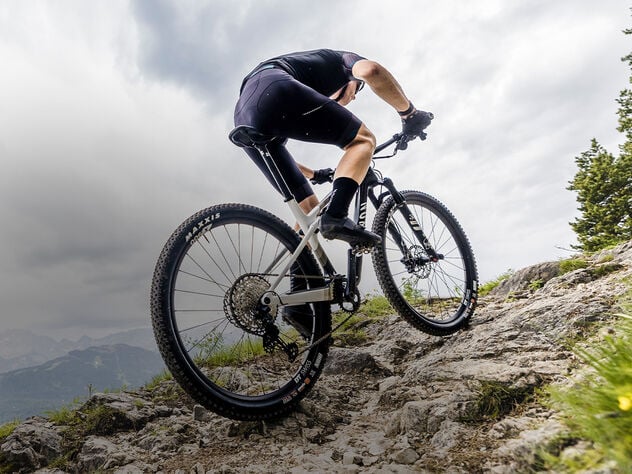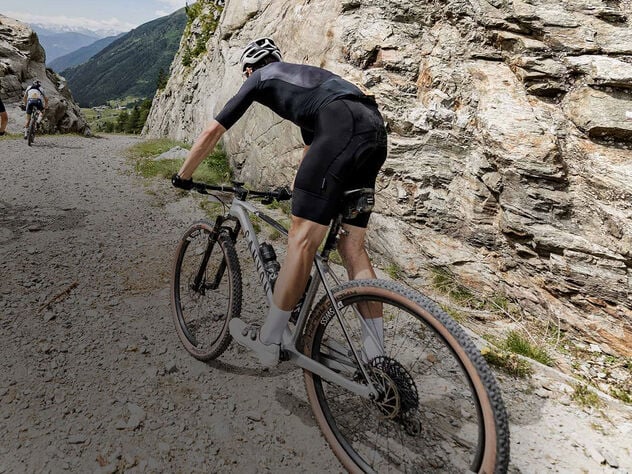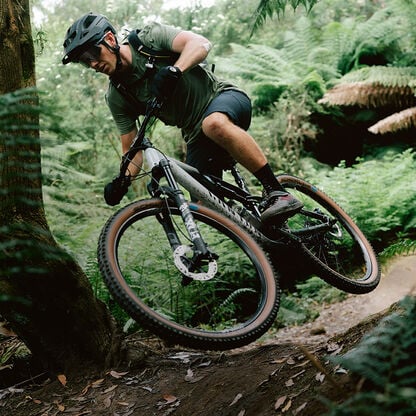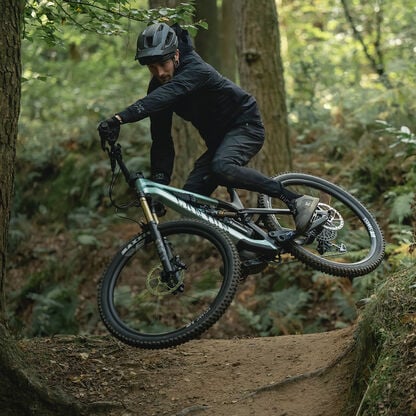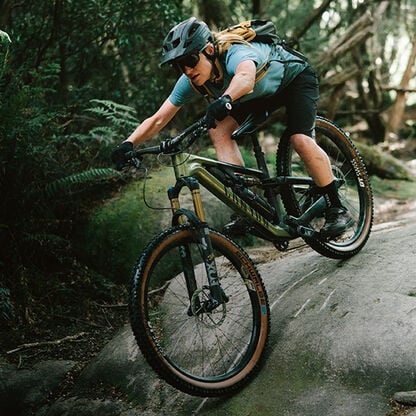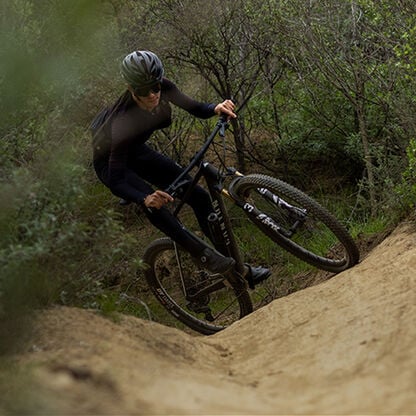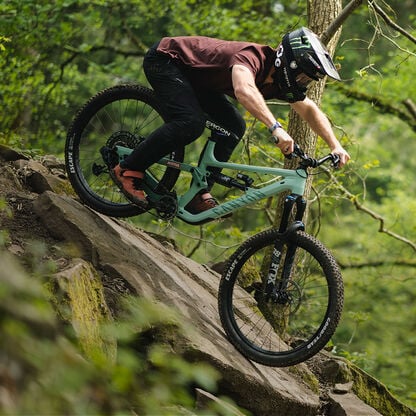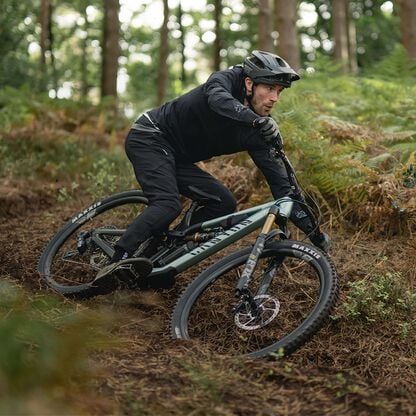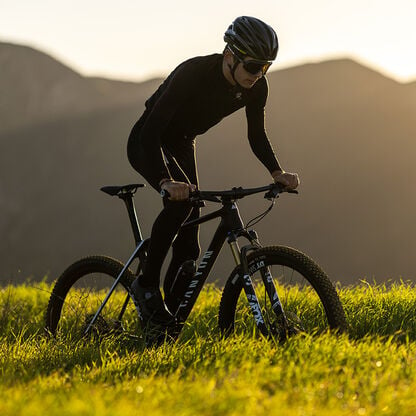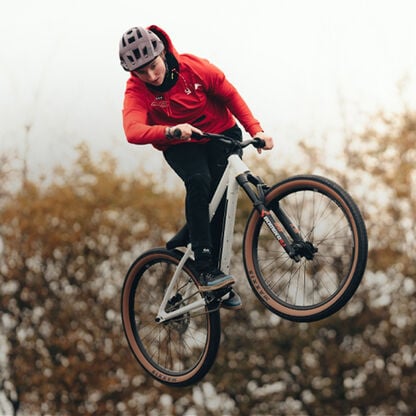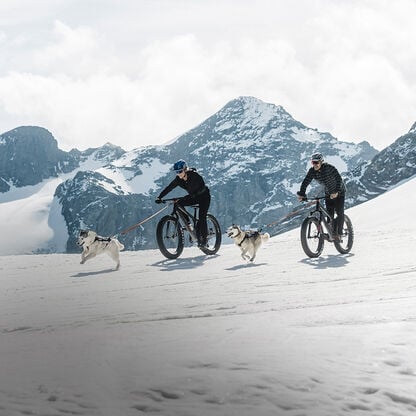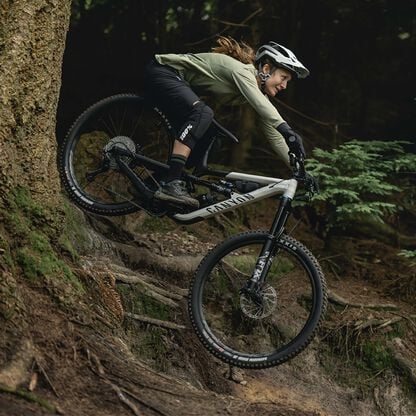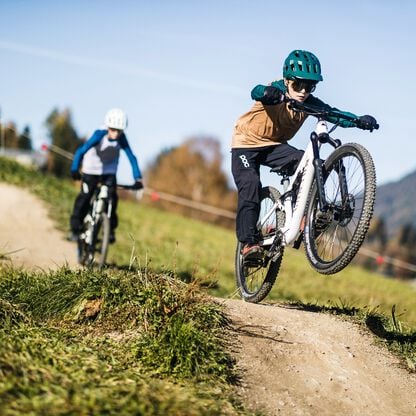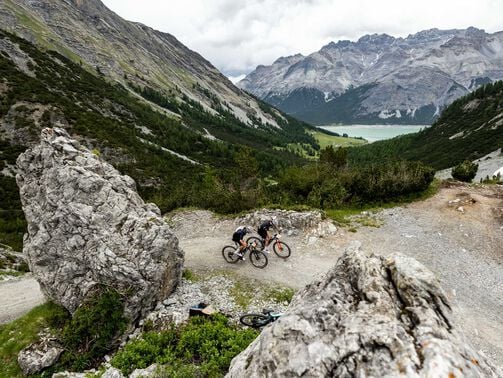The great debate: Hardtail vs. Full Suspension
If you’re shopping for a new mountain bike, you’re going to face an important choice: should you buy a full-suspension bike or a hardtail ride? Many different factors come into play when deciding on your ideal setup. The configuration that's right for you depends on your weight, the terrain, cost, maintenance and more.

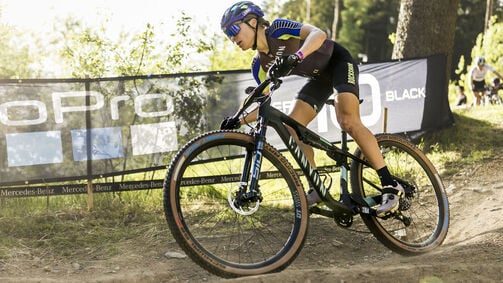
Exceed and Lux: Canyon's hardtail vs full suspension options
With their hardtail and full-suspension models, Canyon Exceed and Lux mountain bike ranges are trailblazers in the cross-country scene. But what are the fundamental differences between the two?
A hardtail bike is one equipped with only front suspension, while a full-suspension model has both front and rear suspension.
Why suspension?
Suspension gives you greater comfort and control when riding over rough ground. Mountain biking is a sport that takes you over a wide variety of terrain. While
hardtails
are suited to relatively smooth trails, full-suspension setups come into their own on bumpier, longer rides.
In gravity-fed mountain biking disciplines, a full-suspension bike is the obvious choice for ultimate performance. The extra traction and capability make up for the extra weight added by the shock and swingarm. But it’s mostly in the Trail and XC worlds that there’s real contest between hardtail and
full-suspension bikes.
Hardtail mountain bikes
Hardtails have no rear shock—they get the name from the rigid rear end. Like their full-suspension counterparts, hardtails are for off-road use and are typically cheaper and lighter than dual suspension bikes. But while a full-suspension bike may offer increased comfort and control while riding, hardtail bikes shouldn’t be overlooked.
Where does a hardtail mountain bike excel?
Hardtail bikes tend to excel on slower, tighter trails and any place where the dirt offers more traction. On less technical terrain, hardtails often provide a more direct, up-close-and-personal ride. The rigid back end offers superb power transfer to the rear wheel when climbing and sprinting.
Hardtail bikes let you feel more connection with the trail. The extra responsiveness and feedback from the bike help you pump through undulating terrain and generate speed with maximum efficiency. Many also argue that they make a better rider too. Without the forgiving handling of a full-suspension bike, they force you to anticipate and react to sudden shifts in direction and take better lines into corners.
One other key consideration, taken very seriously by those competing at the highest level in XC, is the weight savings a hardtail offers. On average, full suspension models are around 3 pounds heavier, and this can make all the difference when trying to save seconds on the ascents.
Budget is also usually a factor when considering your next bike. If they are equipped with similar components, hardtails are usually cheaper than a full suspension option. Additionally, hardtails need less maintenance—you only have to set up the front suspension and there are fewer moving parts overall.
What is a full-suspension mountain bike?
Full-suspension mountain bikes have both a front suspension fork and a rear shock. The rear shock improves the bike's traction, control and comfort.
Where does a full-suspension mountain bike excel?
Full-suspension mountain bikes perform much better on rough terrain and will excel on many courses where a hardtail will struggle. This is mostly due to the traction provided by the rear suspension.
On bumpier trails, the rear shock helps ensure that the tires remain in contact with the ground. This provides better traction, so you don’t rebound off the bumps and lose grip. As you hit the roots and rocks at speed, full-suspension bikes also significantly dampen the force through the pedals and handlebars. A smoother ride is also more comfortable and helps to keep fatigue at bay during longer rides and races.
Full-suspension bikes also give you a wider margin of error. They enable better traction, control, and steering, which reduces the risk that comes from making mistakes on rougher terrain.
Confidence is key in mountain biking, especially for newcomers to the sport. Since full-suspension mountain bikes are more forgiving, they can reduce those minor accidents and scares that slow down a rider's progress. But while the advantages are clear, the added convenience comes with a price: extra weight, higher cost and increased maintenance.

Hardtail vs. full suspension — Canyon Exceed vs. Canyon Lux
Now that you have a better understanding of the differences between hardtails and full-suspension bikes, it's time to see what Canyon has to offer. Our hardtail Exceed range and our full-suspension Lux range. mountain bikes are precision-engineered for varied terrain. Here's how to find the right Canyon XC ride for you.
The Canyon Exceed Range
Canyon's premium hardtail models allow beginners and experts alike to enjoy the blood, sweat and thrills of
cross-country racing..
With a hardtail design engineered for lightweight strength and supreme performance, Exceed is a true illustration of when less is more. Purposeful straight lines, slender chainstays and absolutely no excess. It's this high strength-to-weight ratio design that makes the Exceed range stand apart.
For added comfort and performance, and to maintain all the inherent benefits of a hardtail design, we've honed the bike geometry for maximum performance. Although the lack of a rear shock may worry some riders, Exceed is especially designed to offer some flexibility, which takes the sting out of bumps on the trail. At the same time, its carbon layup maintains excellent stiffness when pedaling. And selected models feature a flat spring seatpost, which further enhances vertical compliance and helps reduce rider fatigue from those incessant high-frequency vibrations on the trails.
A range designed to exceed
From the entry-level CF SL 5.0 to the world-class CF SL 9.0, the Canyon Exceed range leads the way in hardtail designs. Engineered for precise handling, the front fork has 100 mm of travel across the entire range. But while the hardtail design offers many benefits on its own, bike design is a holistic game. Coupled with our stiff carbon framesets, the design helps ensure a ride that stays true to its name and exceeds all expectations.
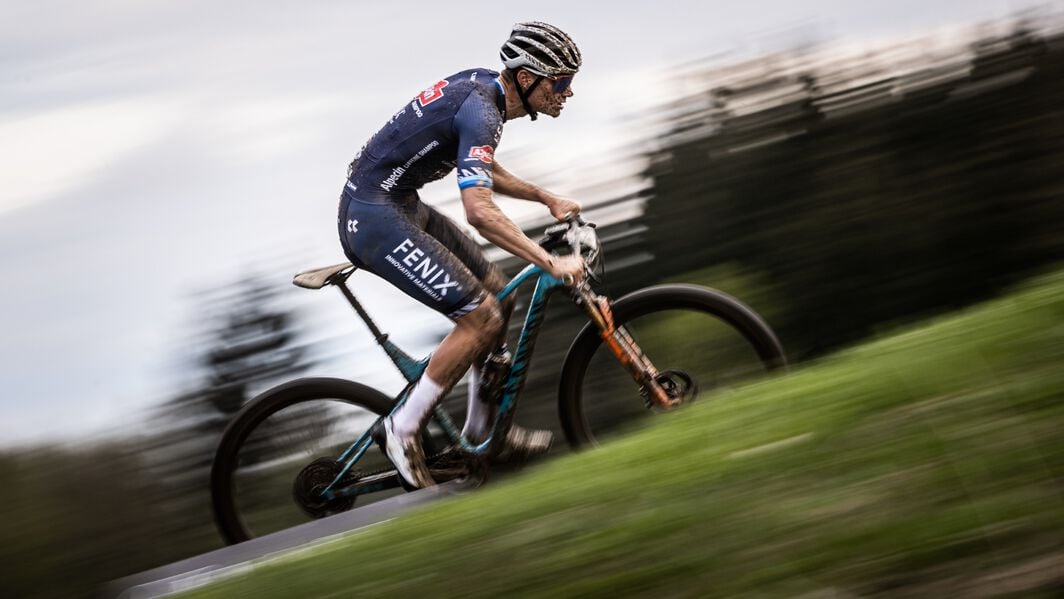
The Canyon Lux Range
The Canyon Lux range is adapted to the rapidly evolving world of cross-country mountain bike racing. As XC tracks become more technical, the extra traction and capability afforded by a full suspension chassis can make the difference between winning and losing. Our Canyon Lux models provide the modern progressive XC bike that an increasing number of racers demand. Trusted by the likes of Mathieu van der Poel and Loana Lecomte, the Lux range is the ultra-light, full-carbon, full-suspension XC bike with a race-winning pedigree.
A deluxe line
As one of Canyon's longest-serving full-suspension builds, the Lux range comes in a design tailored for XC and marathon racing. The entire range features 110 mm of rear suspension travel and an ultra-lightweight carbon fiber frame rolling on 29-inch wheels.
Our top-of-the-line Lux CF SLX 9.0 DT LTD meets the requirements of elite XC and marathon riders. With a total of 8 models to choose from, including frame-only options, the Lux range delivers some of the finest full-suspension options for XC riding and racing.
What's the ideal wheel size for hardtail and full-suspension bikes?
Wheel size is a crucial factor in mountain bike configuration. While 26-inch wheels were once the norm, larger 27.5-inch wheels and even 29-inch wheels have become popular in more recent years.
29ers have several advantages. Firstly, the larger diameter helps the wheels roll over the rough terrain since less forward momentum is lost when encountering roots, rocks and bumps on the trail. That means 29-inch wheels require less power to pedal off-road, so you can maintain your speed more easily. Tests reveal a 4-8% difference in the power required to pedal uphill on a bike on 29-inch wheels when compared to a 26-inch model.
Moreover, the improved rolling capability increases comfort on long rides. And 29er tires also feature a larger contact area with the ground, which gives you more traction and control when accelerating, braking and cornering.
But while 27.5 and 29-inch wheels lend themselves to better overall performance, they don't outperform 26-inch wheels in every scenario. Larger wheels are heavier—something that's compounded by the fact that it's a rotating mass.
As a result, acceleration is more sluggish and they are less maneuverable on technical tracks. You also need to consider the correlation between wheel size and rider height. If you are under 5’7”, 29-inch wheels can pose standover clearance issues on some frames.
Price variations between hardtail and full-suspension bikes
A hardtail mountain bike is always cheaper than an equivalently equipped full-suspension model. Prices for quality hardtails start out at around $1,500 and go up based on the specs and quality of the components and frame.
With quality full-suspension bikes starting at the $2,500 mark, budget becomes an important factor in determining which option you choose. It's always preferable to buy a quality hardtail bike over a cheap full-suspension bike.
As with every build, there's a lot more to a bike than suspension alone. The components, groupset, frame geometry and materials all influence performance, comfort and reliability—and shouldn't be ignored.
You decide
Whether you choose a hardtail or a full-suspension model will depend very much on your budget and the terrain you’re planning to ride. But know that quality builds exist for both, and within each camp, there are options available at various price points. If you’re just entering the world of XC racing or trail riding, hardtail vs full-suspension is a key consideration, but we hope we’ve helped to make your decision a little bit easier. What sets Canyon apart is that you can buy bike online and it arrives at your doorstep nearly ready to ride. Our bikes come 95% pre-assembled. You can also take advantage of a 30-day return policy, along with a long-term six-year warranty. We'll see you on the trails!
Discover our Mountain Bikes
Did this article help?
Thank you for your feedback
